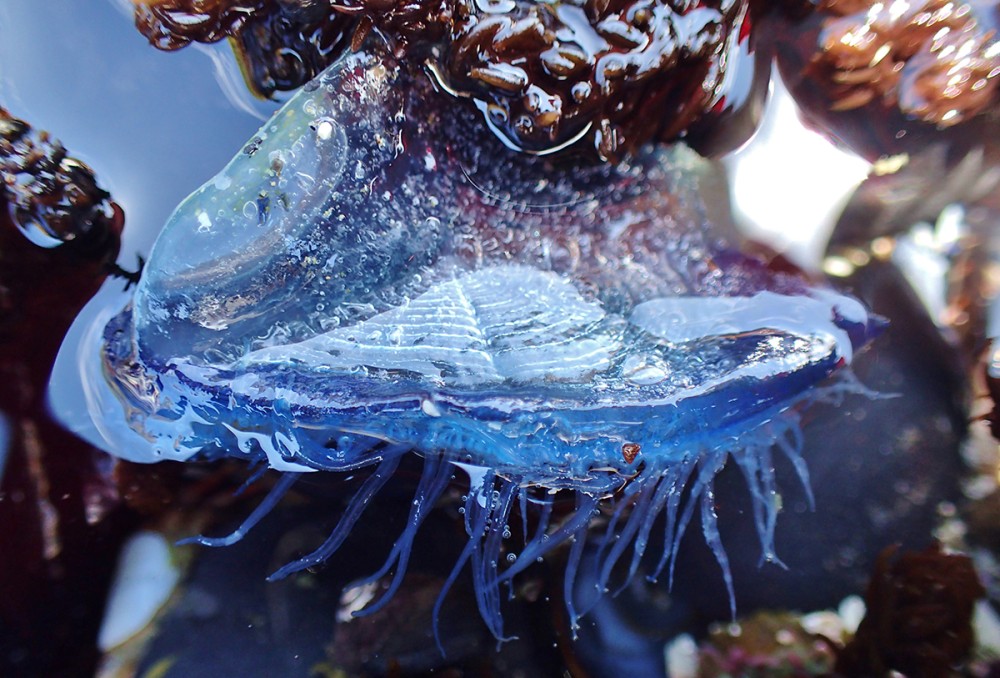Jellyfish at prayer
Is V. velella a colony or an individual? When does sharedness dissolve into oneness?

The woman with the net has been out there since daybreak, one foot up on the starboard railing, orange waders stark against gray sky. On my break from the wet lab—when last night’s trawl of rockfish, sardines, leptocephali, and lingcod have been sorted and measured and tallied—I join her, peering down the ten-foot drop from deck to swells. Before I can ask, she answers: “I’m Andrea, pelagic dynamics. I’m counting jellies,” and points to the field guide (Peterson’s Fishes, waterproof edition) open at her feet.
I’ve seen these jellies washed up on Oregon beaches, masses of tangled tentacles and shimmering floats staining the surf line blue. Velella velella, a free-floating hydrozoan—the name rolls off my tongue slick as the creature’s gelatinous, indigo flesh. Atop each body, a chitinous sail protrudes one inch upward, angled to catch northwesterly winds at 45 degrees. Riding currents and breezes, the jellies drift thousands of miles, aggregating in schools a million strong.
But during her shift today—and yesterday, and last week, and all of June, the usual peak abundance—Andrea hasn’t seen a single one. This could mean nothing. Cyclical reproducers, V. velella’s population oscillates naturally year to year. Or it could mean that with the seas warming and upwelling patterns shifting, this barrenness is merely a prelude of losses to come.





